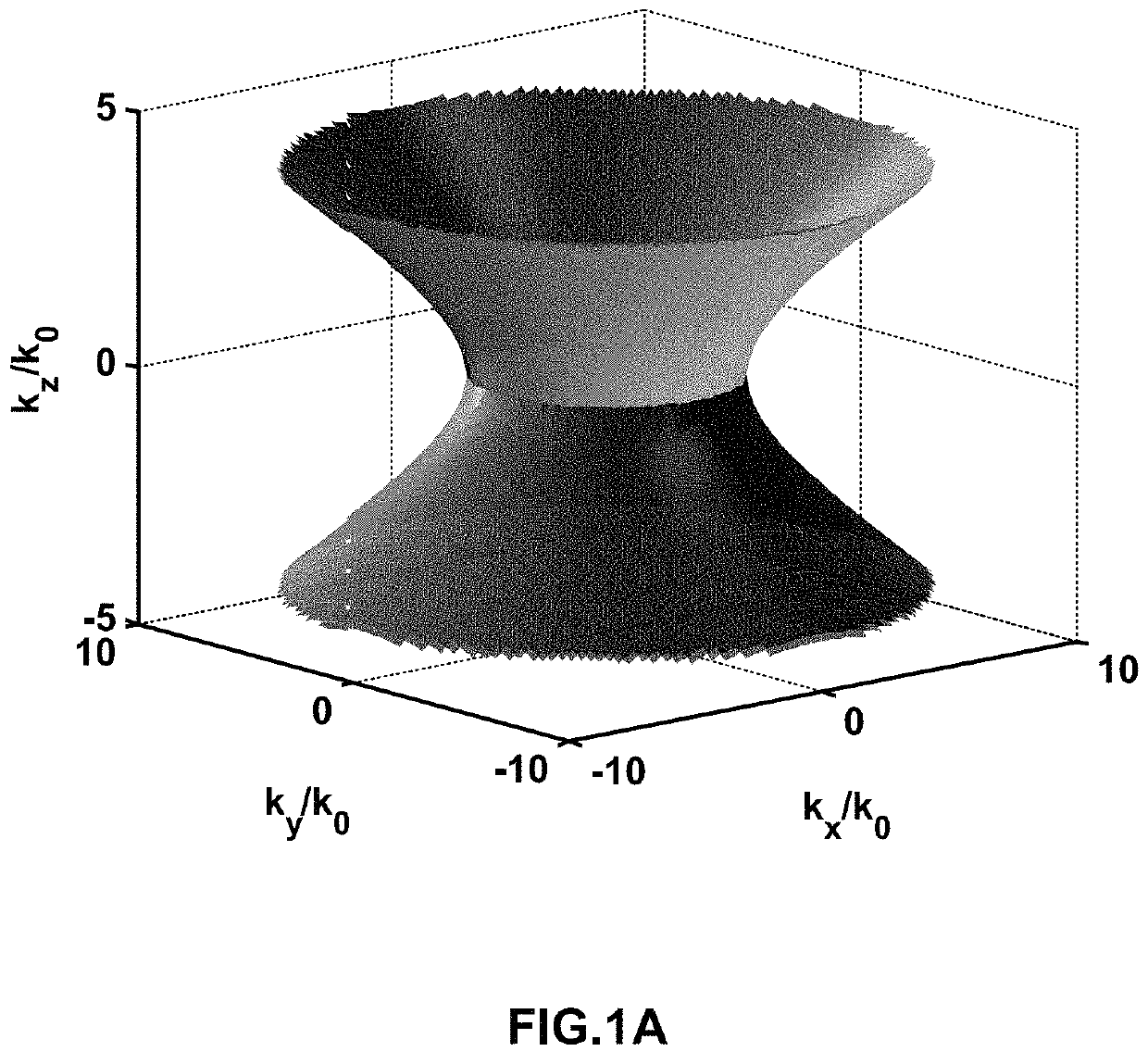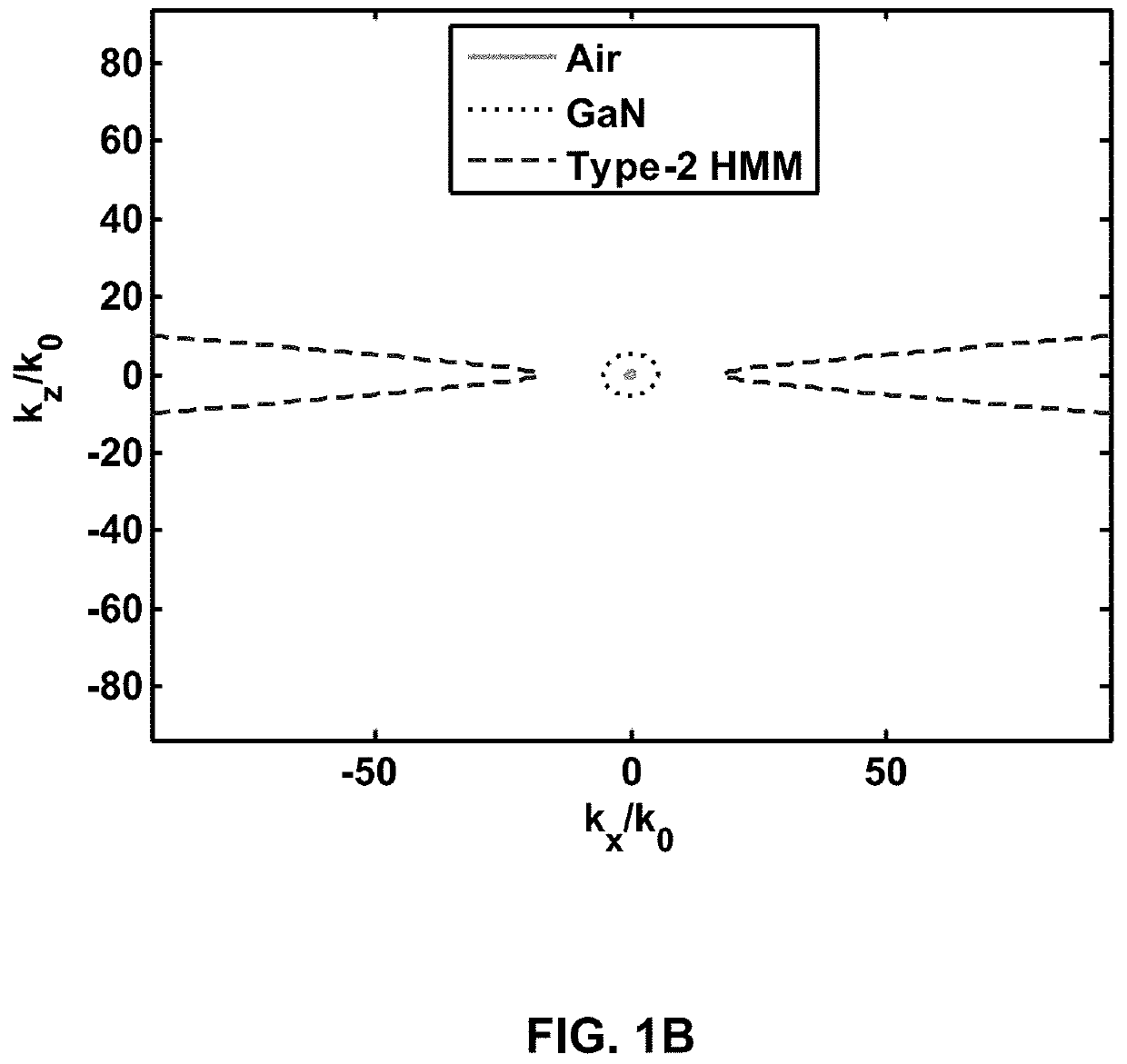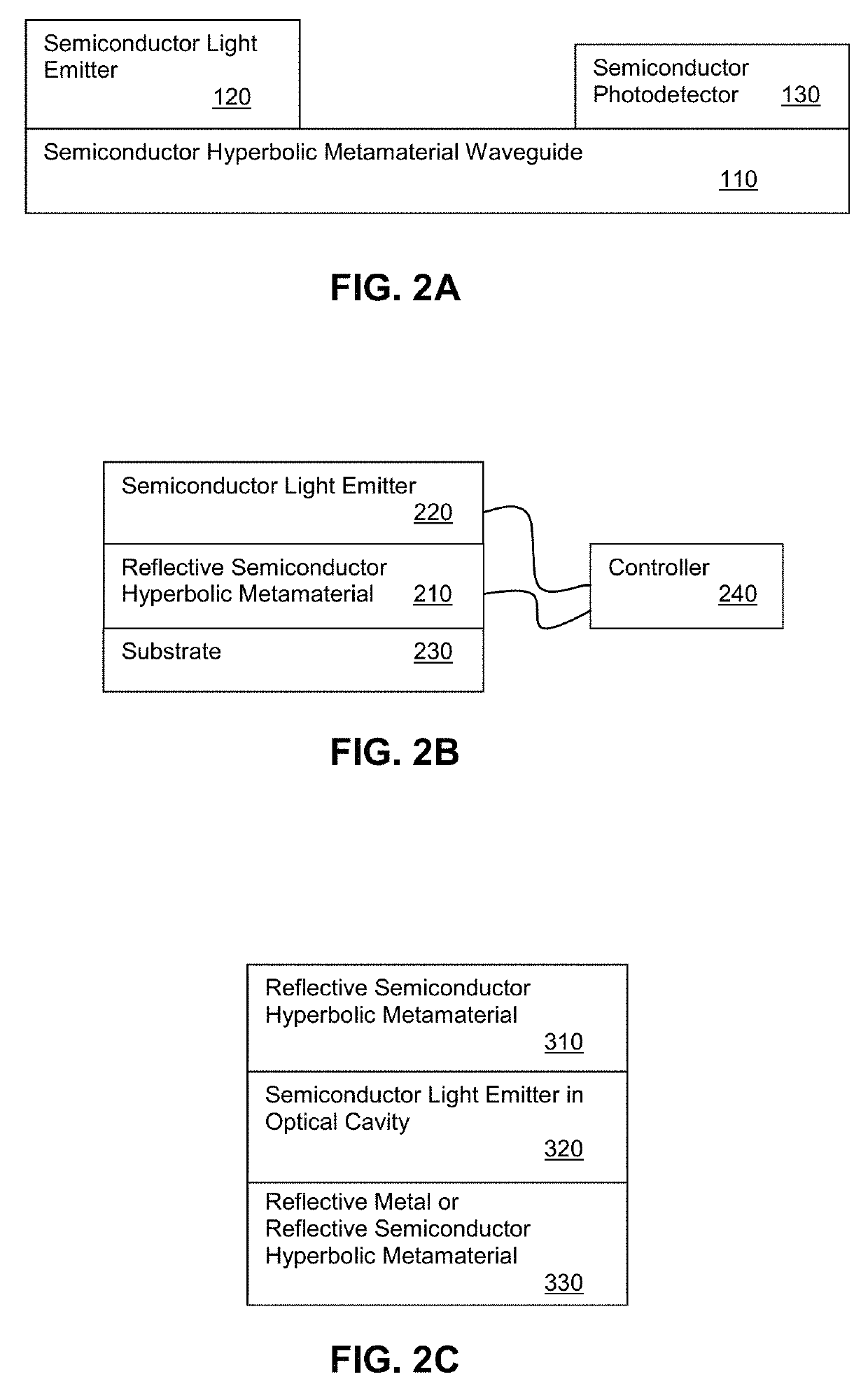Devices with semiconductor hyperbolic metamaterials
a metamaterial and semiconductor technology, applied in the field of metals, can solve the problems of difficult to achieve thin metal deposition, metal layer loss inherent loss, and disadvantages of hyperbolic metamaterials with metal layers
- Summary
- Abstract
- Description
- Claims
- Application Information
AI Technical Summary
Benefits of technology
Problems solved by technology
Method used
Image
Examples
Embodiment Construction
[0070]Light propagating in air with a certain angle relative to material slab (and thus kx wavevector) can only propagate into another material by matching the transverse wavevectors, e.g., kx-Air=kx-GaN. Light traveling from air at any angle relative to the GaN slab can propagate into the GaN given that a transverse component in GaN, kx-GaN, on the isofrequency curve is accessible for all possible transverse components in air, kx-Air. In contrast, only light propagating in GaN within a narrow angular cone relative to the air / GaN interface can propagate into the air by matching an available transverse wavevector in air. Light propagating in GaN at a larger angle relative to the surface normal cannot match the transverse wavevector and thus cannot propagate into the air, and will suffer from total internal reflection.
[0071]Examining FIG. 1B, one sees that any electromagnetic wave propagating in the type-2 hyperbolic metamaterial cannot match the transverse wavevector of air (or GaN) ...
PUM
| Property | Measurement | Unit |
|---|---|---|
| modulation frequency | aaaaa | aaaaa |
| thickness | aaaaa | aaaaa |
| thickness | aaaaa | aaaaa |
Abstract
Description
Claims
Application Information
 Login to View More
Login to View More - R&D
- Intellectual Property
- Life Sciences
- Materials
- Tech Scout
- Unparalleled Data Quality
- Higher Quality Content
- 60% Fewer Hallucinations
Browse by: Latest US Patents, China's latest patents, Technical Efficacy Thesaurus, Application Domain, Technology Topic, Popular Technical Reports.
© 2025 PatSnap. All rights reserved.Legal|Privacy policy|Modern Slavery Act Transparency Statement|Sitemap|About US| Contact US: help@patsnap.com



